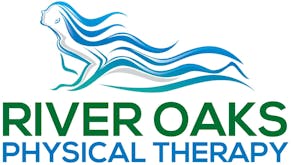Torticollis is a clinical condition characterized by tightening of the sternocleidomastoid (SCM) muscle on one side of the neck, resulting in the tilting of a child’s head to one side. It can occur due to abnormal positioning of the baby within the uterus or due to injury to the SCM muscle. It may also be associated with other conditions affecting the skull, neck, and spine. Over time, torticollis can result in permanent shortening of the muscles and may require surgery, so it is best to treat this condition as quickly as possible.
The condition is usually diagnosed in the first 3 months after the birth of the baby, and treatment should be initiated as quickly as possible.
A physical therapist is a licensed expert in the musculoskeletal system and can put together a treatment program for conditions involving the bones, joints, and muscles. Physical therapy plays an important role in the treatment of children with torticollis. The therapist will prescribe a variety of exercises to help strengthen the muscles of the neck and treat torticollis.
Improving Quality of Life for Children
Physical therapy helps to restore the quality of life for adults and children.
Gentle stretching exercises and manual techniques are used to gradually increase the length of the muscle fibers. Such treatment techniques reduce pain, increase movement, improve posture and prevent the deterioration of this condition.
A well-known form of exercise for children with torticollis is called 'tummy time'. The child is encouraged to spend more time on its tummy. This promotes core strength and helps stretch the muscles in the neck.
A physical therapist will also work actively with caregivers and parents. Parents are made aware of what is required at home. A coordinated approach enables the child to receive the right care 24 hours a day.
The goals of physical therapy in the treatment of torticollis
The primary objective is to increase movement in the neck region. In essence, the child should be able to tilt the head side to side, rotate the neck, look up, and touch the chin to the chest. Restoring posture in the head and neck region also helps with balance and normal development in weight shifting methods such as sitting, standing and walking.
Helping Your Entire Family
To get the best outcomes as quickly as possible, children need to feel comfortable and safe in a treatment environment. A physical therapist can make the treatment experience fun and reward for your child using the right environment, tools, and language to make your child receptive to the activities involved in recovery. All this can be achieved while measuring progress and achieving milestones. The result - your child gets better, faster.
Parents play a big role in the treatment process. The right home environment includes positioning devices such as neck pillows, blankets, and foam wedges to facilitate symmetrical positioning of the head and neck. Correct positioning of the child during day-to-day activities, active stretching techniques and careful monitoring for signs of regression are important responsibilities for parents. The good news is - you are never alone as a parent. Your physical therapist is always here to help.
Physical therapy is an important part of our lives, for children and adults. Your physical therapist has an arsenal of treatment options such as stretching, strengthening, manual techniques and more. Call us today to learn more. We can help you, your child and your whole family.

